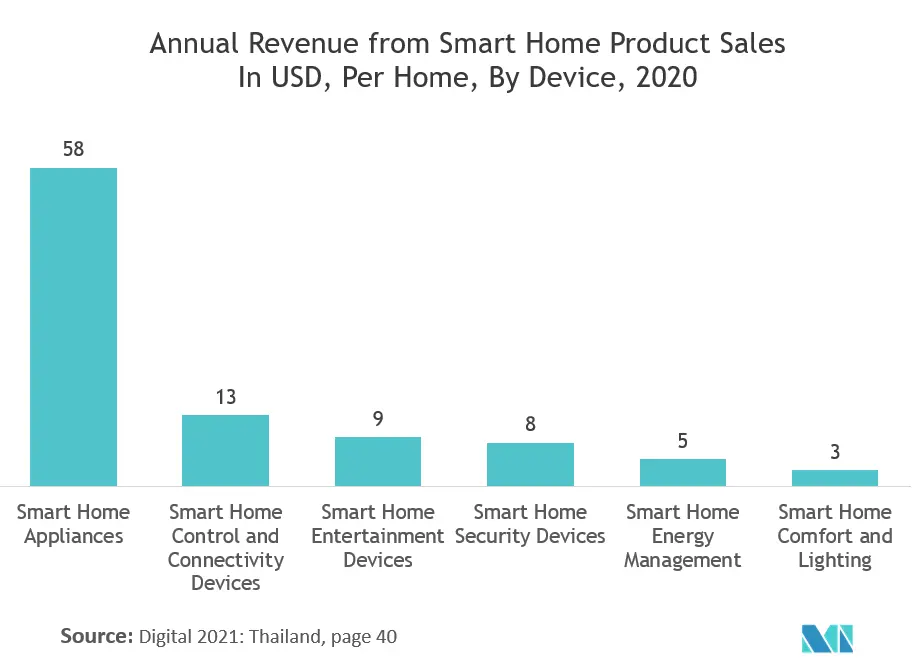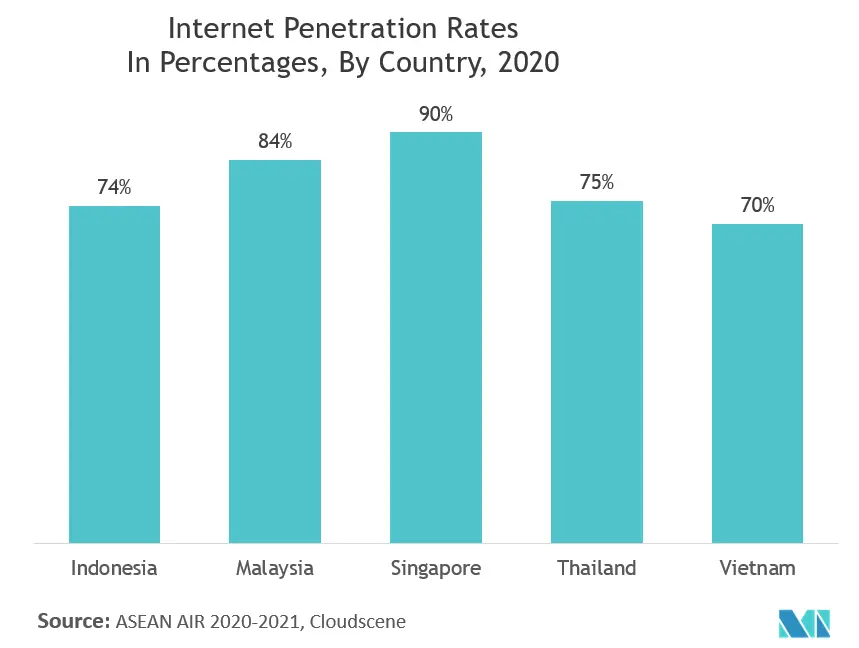Market Trends of ASEAN Smart Homes Industry
This section covers the major market trends shaping the ASEAN Smart Homes Market according to our research experts:
Increasing Digital Education of Consumers in the Region
- Digital awareness is currently developing rapidly in line with the increase of internet users in the Southeast Asian region. The internet connectivity network that continues to improve and the existence of trending digital markets affect internet users' growth in the region.
- Consumers in the region are unfamiliar with smart homes and have little knowledge about how to incorporate them in the smart home sense seeing as smart homes were a totally novel paradigm. One of the possible obstacles to smart home service implementation has been discovered to be insufficient familiarity with smart home technology.
- Research on energy conservation through smart homes in countries like Singapore in an Energy Policy report reflected that people’s investments in smart technology were primarily motivated by energy savings and comfort, followed by security concerns. The integration of sensors into common goods such as lamps and speakers has been slowly becoming the norm, in lieu of an increasing tendency for appliances that anticipate a loss of interaction with their operations and work towards simplifying use cases for their consumers.
- According to data from the Indonesian Internet of Things Forum, approximately 400 million sensor devices are embedded, of which 16% are employed in retail, 15% in healthcare, and 11% in insurance, 10% in banking and securities, as well as someof the retail, beauty and computer maintenance industries which around 8%. Also, about 7% in government, 6% in transportation, 5% in public utilities, 4% in real estate and commercial and agricultural services, and the remaining 3% is used for housing. Increasingly digital workspaces are expected to encourage consumers to similarly digitize their homes.

Increasing Internet Penetration Rates, Encouraging Government Interest in the integration of Smart Technology
- The initiatives taken by the government in line with the adoption of smart home technologies are one of the major key trends driving the growth of the market over the forecast period. ASEAN countries have seen a surge in Chinese capital flows through massive infrastructure projects that have significant smart city elements, including Forest City Johor Bahru, New Clark City, New Manila Bay City of Pearl, and Thailand's Eastern Economic Corridor. China has also shown a great interest in the region's newly planned township projects, including Indonesia's new capital city in East Kalimantan and New Yangon City.
- According to the Malaysian Investment Development Authority (MIDA), the Malaysian government initiated mandatory compliance to use Industrialised Building Systems (IBS) by 2020 as the first step to encourage the adoption of smart homes technologies. Investors are encouraged to leverage the incentives related to smart homes technology, such as investment tax allowance, incentives for electrical and electronic products and components.
- On similar lines, in July 2021, the Singapore government reiterated its commitment to continuously invest on projects and initiatives that will unlock the full potential of the digital revolution, injecting about USD 70 million into R&D to support the city's technological capabilities.
- The smart city initiatives by the government is also augmenting the growth of the smart home market. Ho Chi Minh, City is focusing on new technologies to become a smart city by 2025. In big cities of Vietnam as Hanoi, Ho Chi Minh City, and Da Nang, smart apartments are becoming a new trend of modern residents who have welcomed the new technologies. Companies have also invested in developing the studied market in the region, Schneider Electric runs a smart factory in Batam, Indonesia for manufacturing power and IA products and opened a USD 45 million manufacturing plant in Viet Nam for the production of electronic products and wiring for smart homes in 2017.
- Similarly, Thailand is poised to be the first country among the Association of Southeast Asia Nations (ASEAN) ten members states, to roll out the fifth generation of broadband internet (5G) for full commercial use in late 2020. The arrival of 5G will further accelerate the adoption of IoT.
- Furthermore, In December 2020, The Japanese government announced plans to provide JPY 250 billion in funding to Japanese companies to develop smart city projects in the Southeast Asian region. The cities include Hanoi, Ho Chi Minh, Jakarta, Bangkok, Singapore and Kuala Lumpur.

